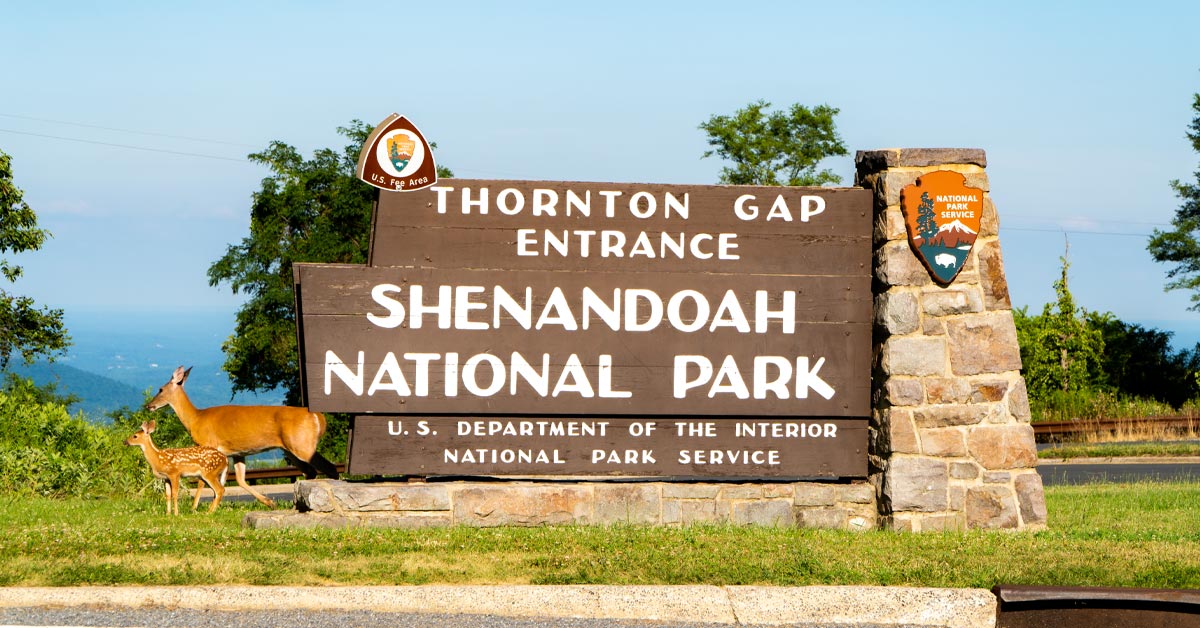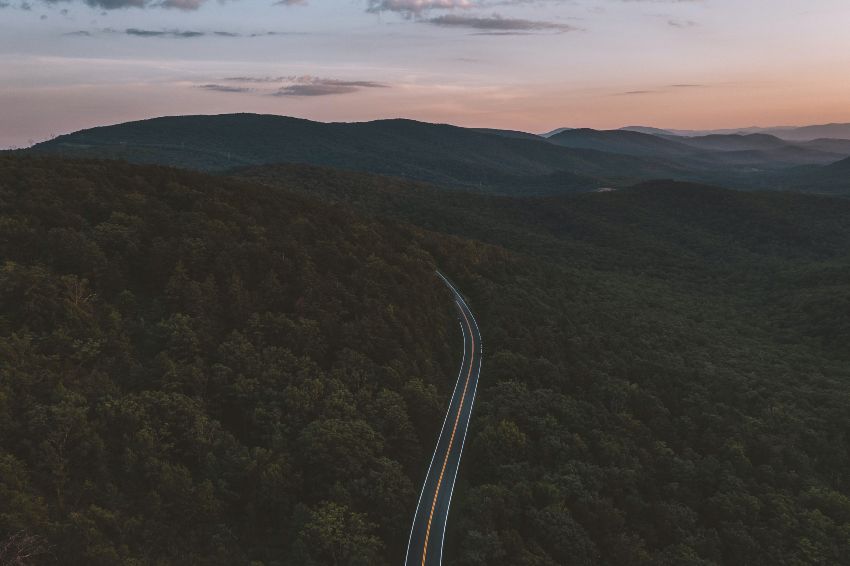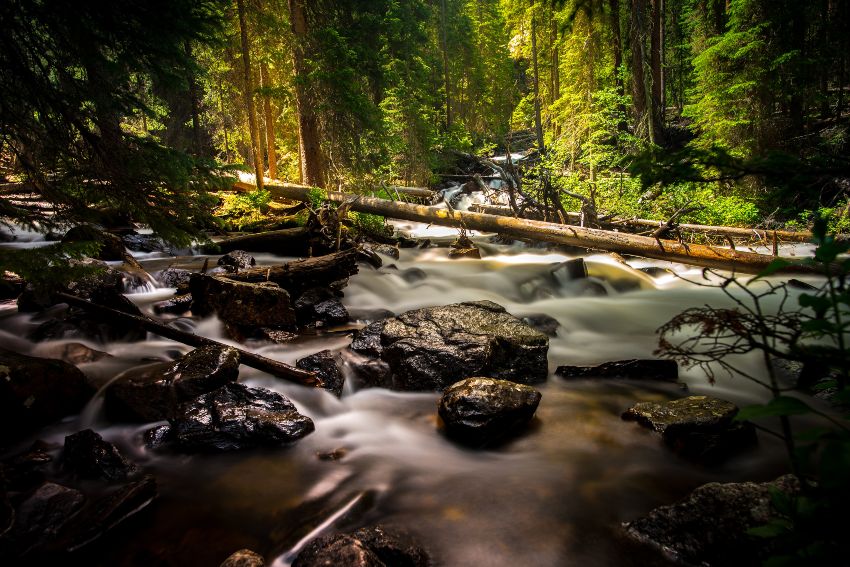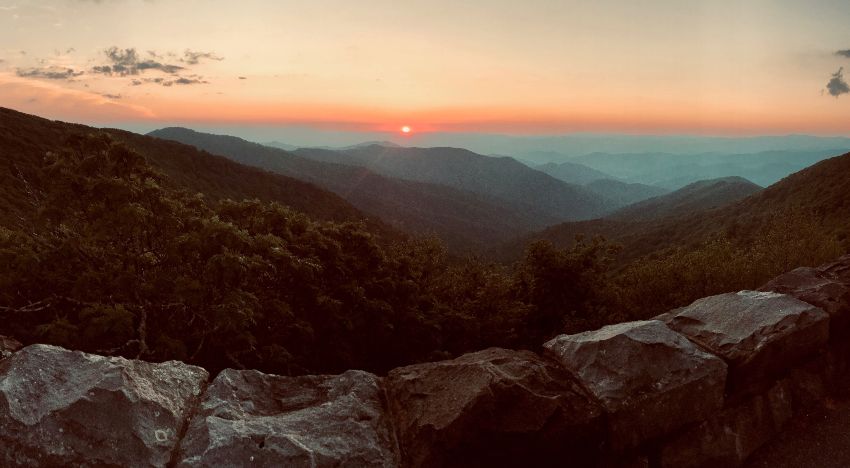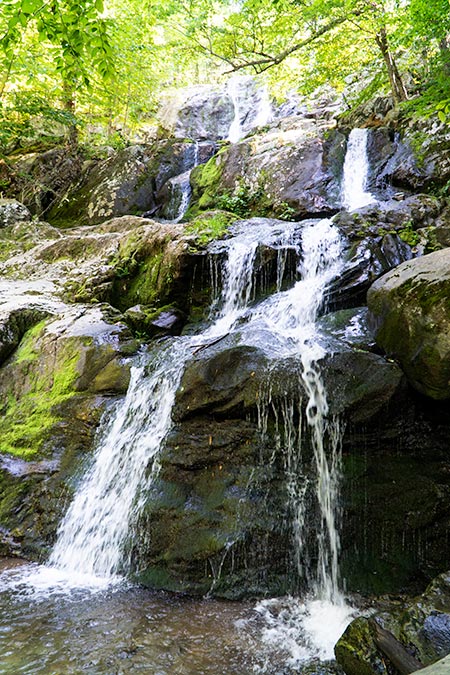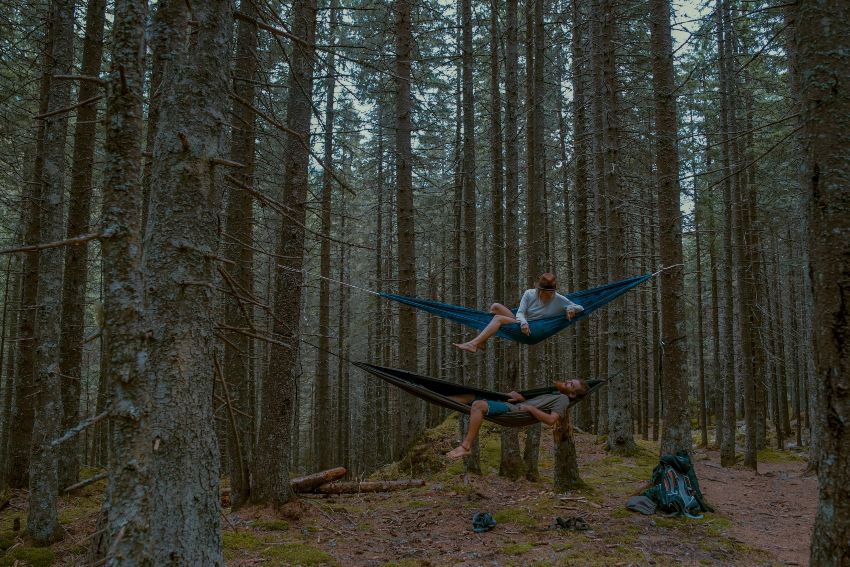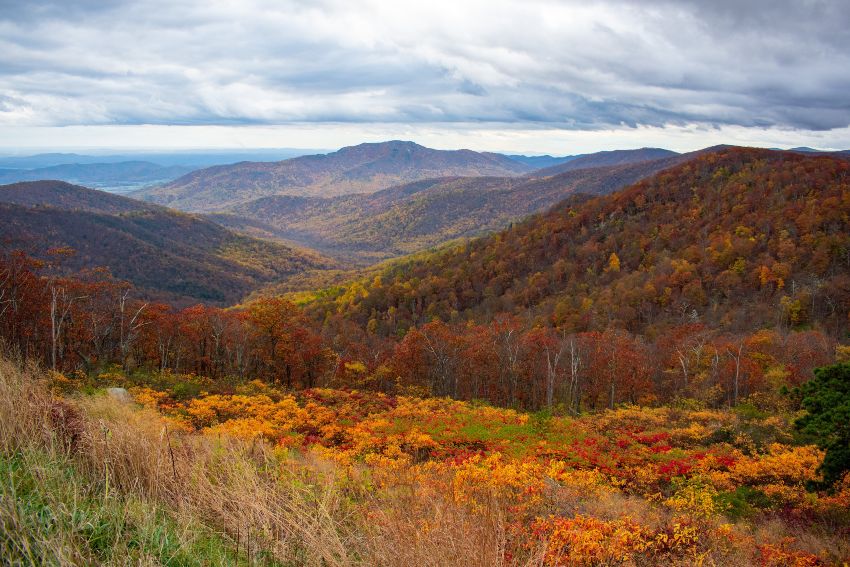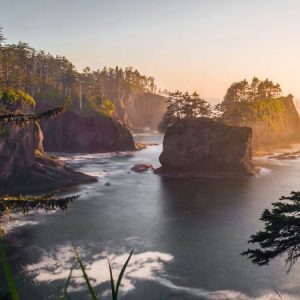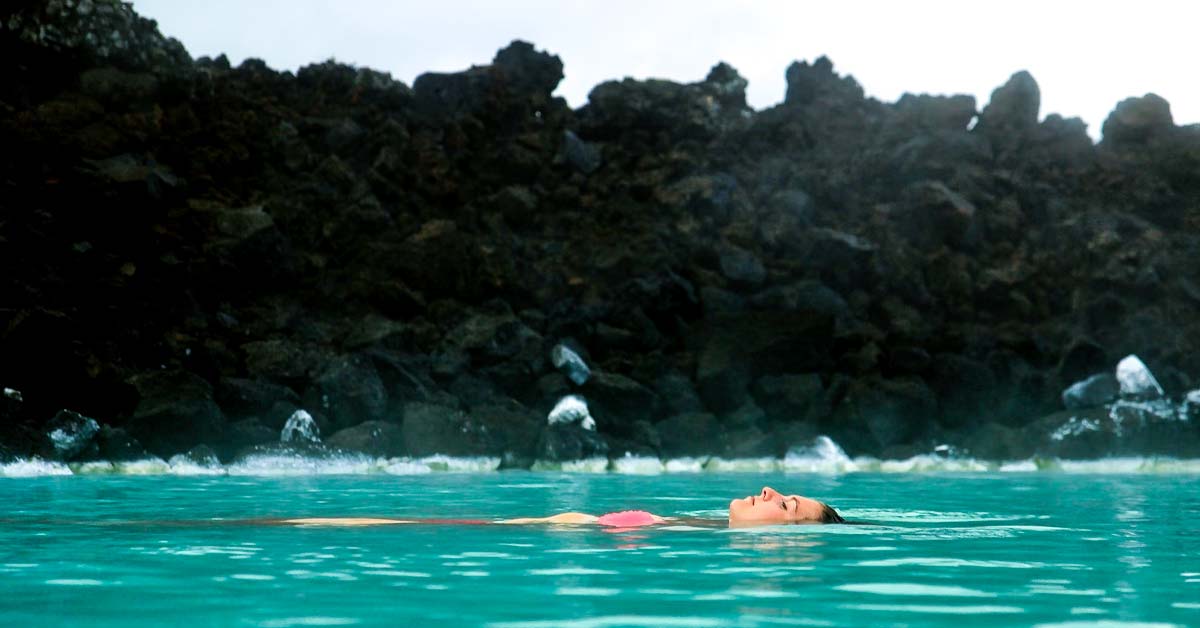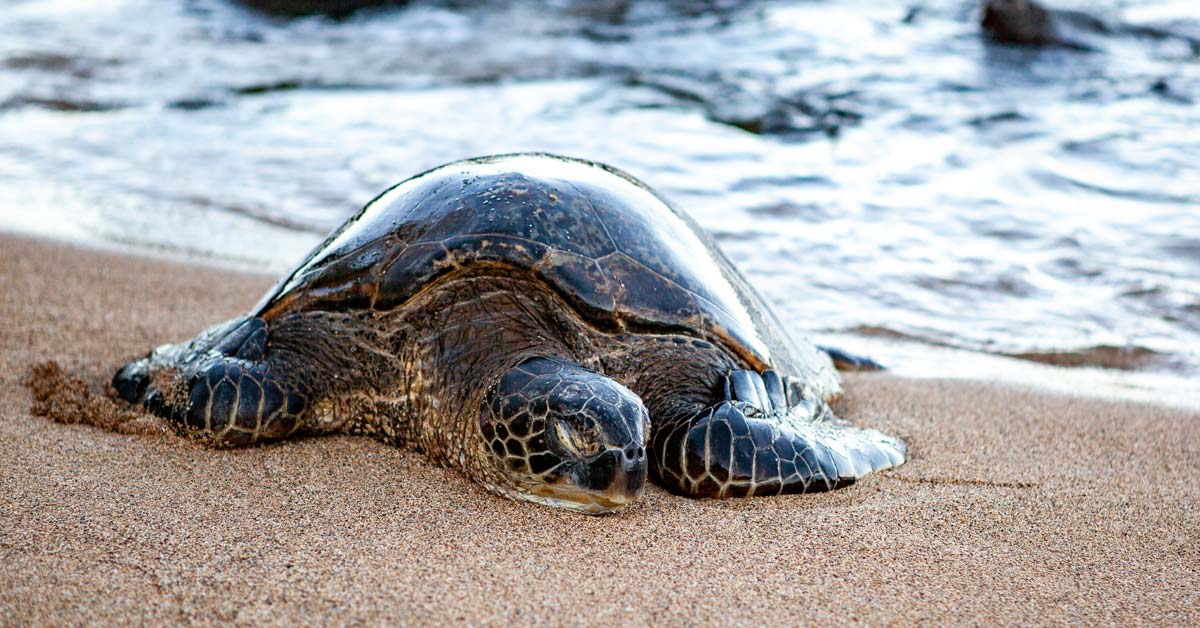Biodiversity, stunning natural sceneries, endless hiking opportunities, and much more awaits you at the Shenandoah National Park.
Located around 75 miles outside Washington, D.C., Shenandoah National Park is the perfect long weekend destination to enjoy pristine nature and a break from the hectic capital.
Read my guide to find out the highlights of Shenandoah National Parks, the best hikes, waterfalls, and must-see peaks, and to learn some useful information on how to make the most out of your time at this wonderful nature reserve.
3 Best Things to Do in Shenandoah National Park
I’ve been to Shenandoah many times over the past few years and always manage to find a new adventure with each trip.
I’ve found these are the best things to do in Shenandoah.
1. Take a Ride Down Skyline Drive
Planning an incredible road trip in the name of pristine nature, stunning vistas, and countless viewpoints?
With its 105 miles of the scenic route, driving through the Shenandoah National Park on the famous Skyline Drive is one of the most exciting ways to experience the stunning park.
This super popular panoramic mountain road will lead you to the heart of the park following the Blue Ridge Mountains, offering over 70 viewpoints overlooking the mountains and wooded hills.
When traveling through Skyline Drive, make sure to schedule a few stops to enjoy the view at Range View Overlook, Hogback Overlook, Crimora Lake Overlook, Spitler Knoll Overlook, or Big Run Overlook.
If you’re big on scenic drives, check out my guide on The 20 Most Scenic Drives in America.
2. Stretch Your Legs on These Incredible Hikes
Big Meadows
Situated at the center of the park, Big Meadows represents the heart of the Shenandoah National Park, as well as the perfect starting point to go and explore the park’s surroundings.
The Big Meadows campground is one of the more popular options among hikers for its privileged central location, and it doesn’t disappoint in terms of amenities and cleanliness.
This highly elevated location offers a superb view of the park’s dense woods and is the preferred location for wildflower viewing during springtime.
From Big Meadows, you’ll be able to take several hiking trails meandering through the lush vegetation of the park, leading to the nearby peaks and waterfalls.
Hawksbill Mountain
The highest peak of Shenandoah National Park. Hawksbill Mountain is an absolute must-see of the park, and is reachable in around 1 hour by foot, taking the 1.7-mile round trip hike.
The view from the top of the Hawksbill mountain is priceless and will be well worth the trip.
This spot offers the best picture opportunities and is one of the best locations in the park for astrophotography or simply to sit down and contemplate the starry sky.
Bearfence Mountain
Are you an adrenaline junkie visiting the Shenandoah National Park? Conquering the summit of Bearfence Mountain will grant you a spectacular 360-degree view over the Shenandoah National Park, but it is not a hike suited for everybody.
The path leading to the peak is blessed with amazing views, but it is extremely challenging as it ends in a rock scramble where you’ll be forced to do some climbing.
Before taking the path to Bearfence Mountain, be sure you’re up to the task. This is not a hike for people afraid of heights or not physically prepared and properly equipped.
Old Rag Mountain
The amazing hike leading to Old Rag Mountain is one of the most popular in the Shenandoah National Park.
The breathtaking view from the summit attracts thousands of tourists, hikers, and nature lovers every year.
For this reason, it is best to schedule your visit to Old Rag Mountain far from the peak season. You’ll avoid the bigger crowds, and at the same time contribute to protecting the natural landscape.
Because of the location’s popularity, there is a small entrance fee and it is necessary to purchase an Old Rag Day-Use Ticket, necessary both to hike and backcountry camping in the area. The ticket is only $1.
I recommend reaching the starting point of the hike early in the morning, reaching the summit around lunchtime, and enjoying a packed meal with a view.
Mary’s Rock Summit Trail
While for the less trained the hike could be a bit challenging, the view from the Mary’s Rock summit is definitely worth the effort.
To reach the peak and enjoy the stunning viewpoint, you can take the North or the South Trails.
Both trails are round tips, but there are some key differences. My advice is to choose the South Trail, as it is shorter (less than 3 miles, compared to the almost 4 miles of the North Trail) and offers better scenery.
Dark Hollow Falls
The Shenandoah National Park is known for its many, wonderful falls, and the Dark Hollow Falls is an absolute must-see in the Park.
The falls are easily reachable by foot, just a short and not that strenuous hike from the Dark Hollow Falls parking lot.
You’ll find the hike leading to Dark Hollow Falls simply picturesque: as you follow the river to the falls, you’ll be able to appreciate the many rapids and smaller waterfalls, as well as the stunning natural setting.
3. Dust Off Your Tent and Go Camping
The best way to visit the Park is to spend at least two or three days on the premises, and what better way than camping?
Perfect for travelers on a budget, outdoor lovers, and anyone looking for a completely nature immersed experience of the park, camping is not only possible but encouraged!
There are two main options worth exploring when it comes to camping at the Shenandoah National Park: staying in the campgrounds or wild camping in the backcountry.
Camping at the Shenandoah National Park Campgrounds
Within the park’s borders, the price per night per campsite campgrounds is $30, while for big groups the price is $75.
- The first option when entering the park is Mathews Arm Campground. Located near the entrance of the park, this is the perfect campground to use as a base to explore the northern part of the Shenandoah National Park.
- Big Meadows Campground is the more central option, conveniently close to all of the most popular tourist spots in the Park. It is also one of the largest campgrounds in the park, with more than 200 sites available for tents and RVs.
- For the most stunning views and panoramas in the park, book your campsite at the Loft Mountain Campground. The camp benefits from a truly privileged and elevated position, being situated on Big Flat Mountain, in the southern part of the National Park.
- Looking for a secluded, small, and spartan campground? Try booking a spot at the lovely Dundo Group Campground. There are only 3 tent campsites available.
Camping in the Backcountry of Shenandoah National Park
For true wilderness lovers, the Shenandoah National Park features over 19 thousand acres of backcountry, where wild camping is allowed and virtually free.
To legally camp in the backcountry of the Park, you’ll need to fill in a camping permit. You can find and print the permit here.
While free camping means complete independence, it’s important to keep in mind a few basic rules to ensure the preservation of the park and your safety.
To be mindful of your surroundings, and achieve a symbiotic relationship of mutual respect with the natural surroundings, just abide by the Leave No Trace principles.
The park is patrolled by experienced guides and rangers, but you are first to be responsible for your safety.
A few suggestions for safe backcountry camping are:
- Choose a pre-existing camping site. Spots that have been previously used as campsites by other explorers are more likely to be safe.
- Store your food and dispose of it properly to avoid attracting wildlife at night.
- Do not start a campfire. It is not safe or allowed to start campfires in the backcountry as it could lead to wildland fires.
When is the best time of year to visit Shenandoah National Park?
Shenandoah National Park is open year-round, offering different kinds of opportunities and fun outdoor activities each season.
While visiting the park can be an incredible experience regardless of the time of the year, nice weather and comfortable temperatures make springtime and fall the best moment to schedule your trip to the famous national park.
During the Spring, you’ll be able to admire the trees in full bloom, as well as a stunning display of wildflowers that colors the park around late May.
The blooming season at the Shenandoah National Park is no joke, with over 862 species of wildflowers observable and even a dedicated Wildflower weekend (May 14-15).
If you love the flowery meadows, check out the official park wildflower calendar before scheduling your visit.
Fall is the perfect season to visit the park, hike comfortably and take stunning pictures of the foliage.
Around September and October, the Shenandoah National Park takes bright shades of red, orange, and yellow, offering breathtaking panoramas.
If you’re planning on camping in the park, I recommend booking your holiday between April and June or September and November.
Camping in the Shenandoah National Park is not possible during wintertime, and the summer, with the high temperatures and thousands of tourists, can be not ideal.
How many days do you need in Shenandoah National Park?
To those looking to explore in full the Shenandoah National Park and its surrounding backcountry, a month wouldn’t be enough.
However, if you wish to check out the best the Park has to offer, 3 days or a long weekend packed with activities will be enough to check most of the park must-see off your Shenandoah National Park bucket list.
Be warned, you will be back.
If you’re traveling through Virginia and want to find out more about what the State has to offer in terms of stunning nature, check out my guide on the 6 Must-Experience Lakes in Virginia.

